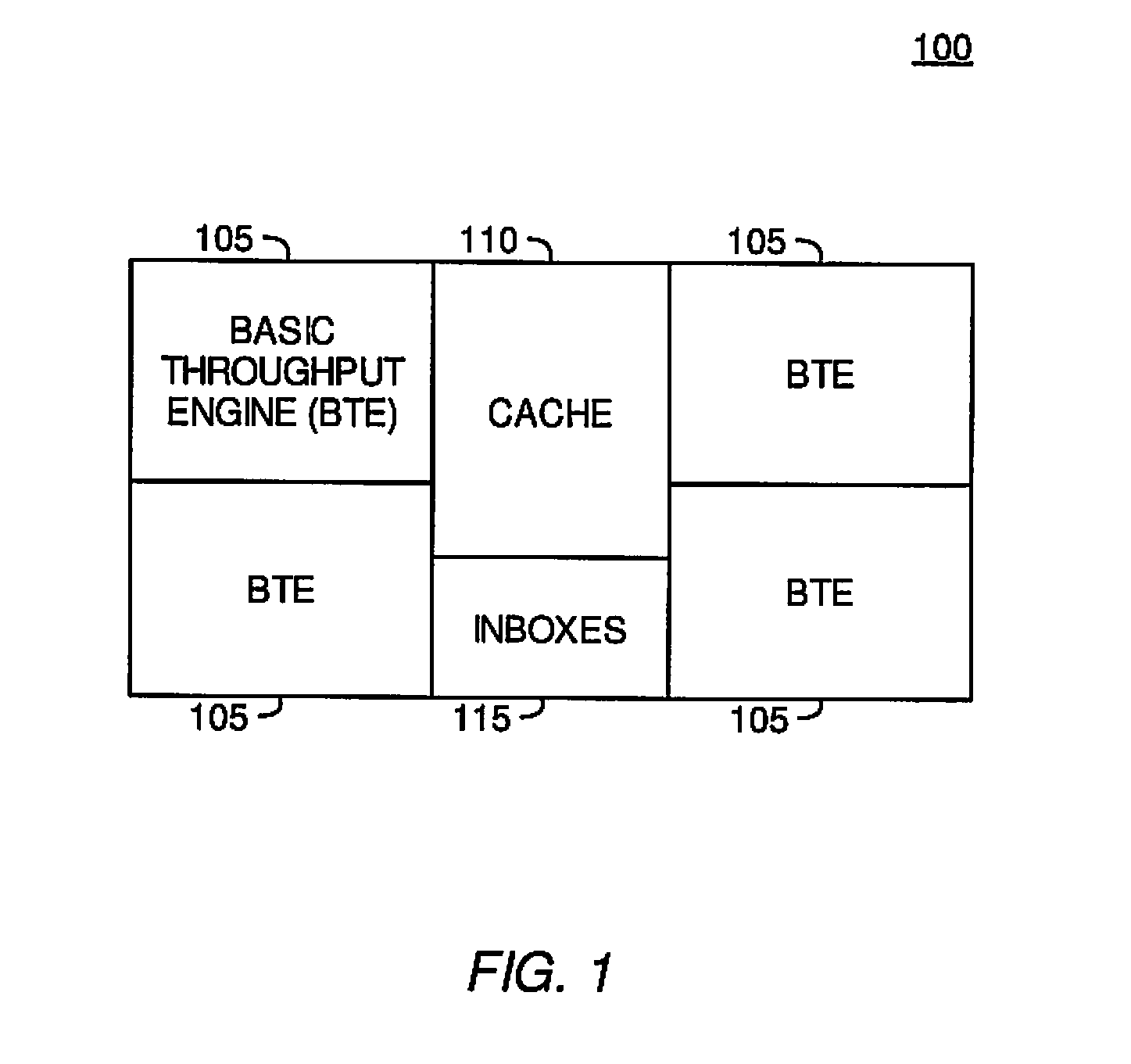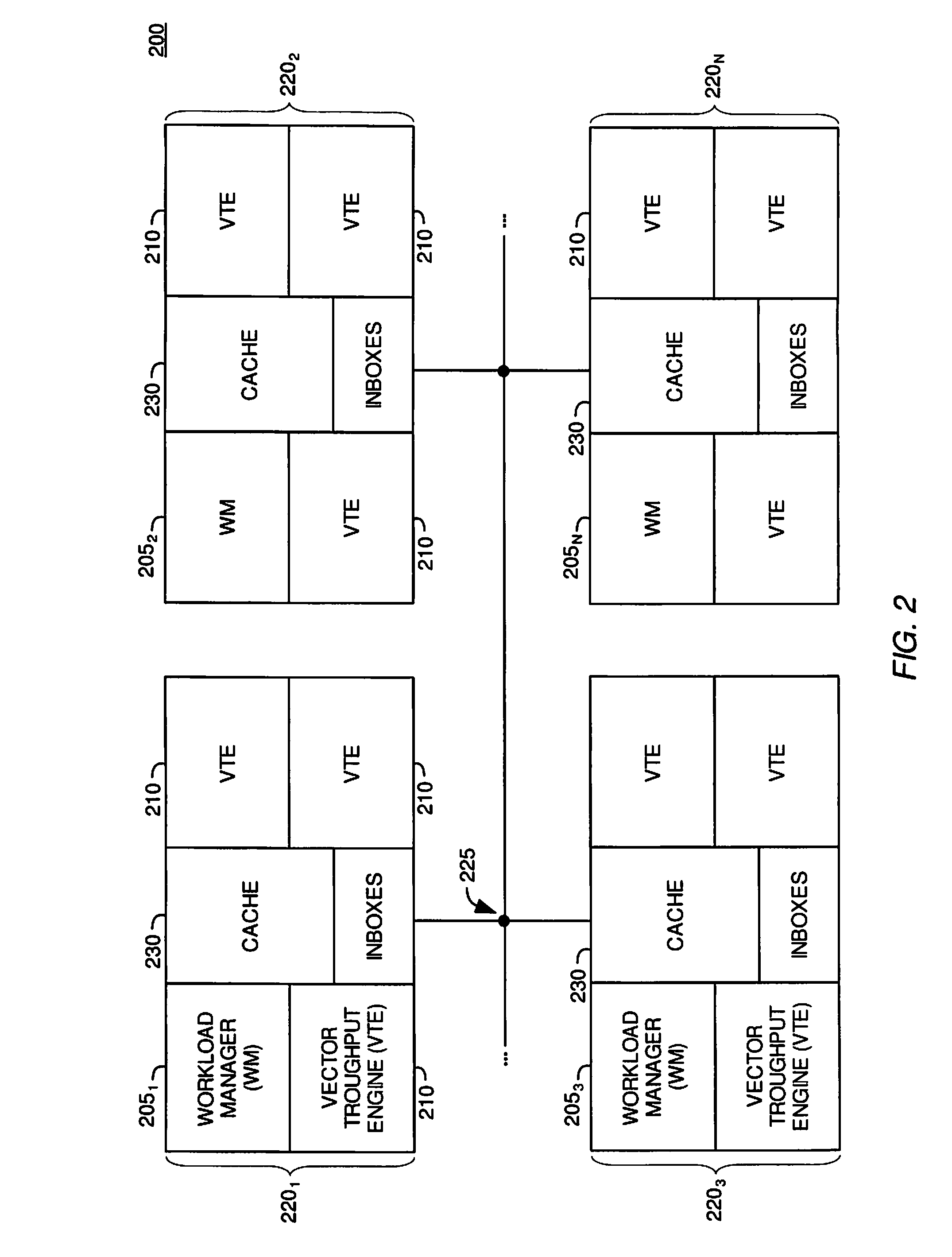Reallocation of spatial index traversal between processing elements in response to changes in ray tracing graphics workload
a technology of spatial index and traversal, applied in the field of computer processing, can solve the problems of rasterization suffering from some drawbacks, using relatively low amounts of computational power, and modern monitors display images, and achieve the effect of increasing workload
- Summary
- Abstract
- Description
- Claims
- Application Information
AI Technical Summary
Benefits of technology
Problems solved by technology
Method used
Image
Examples
Embodiment Construction
[0024]Embodiments of the invention provide methods and apparatus for reallocating workload related to traversal through a spatial index (e.g., when tracing a ray through a three dimensional scene). According to one embodiment of the invention, in a first operating state of the image processing system, a first processing element (e.g., a workload manager) may be responsible for performing operations relating to traversing a ray through a spatial index. When the first type of processing element reaches a leaf node of the spatial index, the first processing element may send information defining the ray to a second type of processing element (e.g., a vector throughput engine). In the first operating state, the vector throughput engine may be responsible for performing ray-primitive intersections tests to determine if the ray intersects a primitive contained within the bounding volume corresponding to the leaf node.
[0025]According to embodiments of the invention, the image processing sys...
PUM
 Login to View More
Login to View More Abstract
Description
Claims
Application Information
 Login to View More
Login to View More - R&D
- Intellectual Property
- Life Sciences
- Materials
- Tech Scout
- Unparalleled Data Quality
- Higher Quality Content
- 60% Fewer Hallucinations
Browse by: Latest US Patents, China's latest patents, Technical Efficacy Thesaurus, Application Domain, Technology Topic, Popular Technical Reports.
© 2025 PatSnap. All rights reserved.Legal|Privacy policy|Modern Slavery Act Transparency Statement|Sitemap|About US| Contact US: help@patsnap.com



